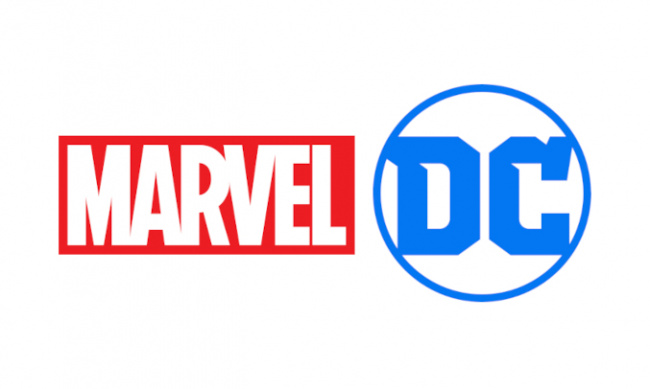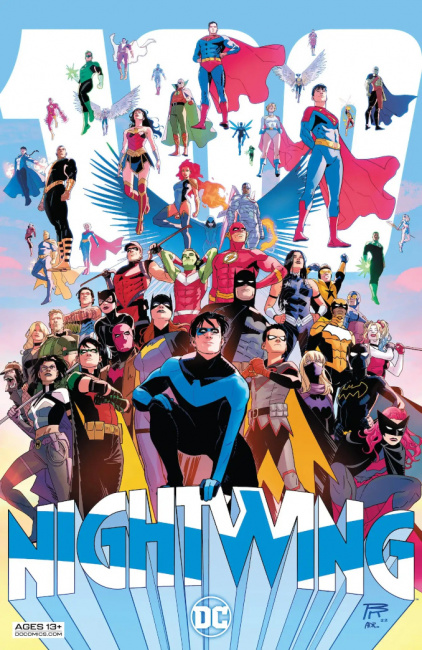After a few fat years during the pandemic, it sure looks like periodical comics are deep into a cyclical downturn, both financially and creatively. January’s unit and dollar sales charts (see "Top 50 Comics – January 2023") are not exactly full of surprises, with various Spider-Man and Batman family titles leading the way, give or take a few stray Turtles. Retailers, do these books have fans lathered with excitement? Is everyone – or anyone – looking forward to upcoming events like Dawn of DC?
Though hard numbers can be tough to figure, reports are that sales are flat or down dating back as far as September, outside of the usual manga and kid-oriented material. Whatever graphic novels, webtoons and media adaptations are doing to expand the top of the market funnel, the perennial market leaders aren’t doing much to keep those readers in the pipeline with monthly must-reads.
Recent data shows superheroes are about to lose their place as the top selling category in U.S. comics and graphic novels, something that, frankly, might end up being good for the medium, but is going to hurt the direct market that depends on reliable, repeat customers for monthly periodicals.
So what’s keeping things bottled up? Here are a few possible culprits.
Supply and demand mismatch. If there are too many books chasing not enough readers, the result is a market slowdown. 2022 saw a 7% increase in the number of monthly titles published by the major publishers, according to Comichron, showing the market is gradually recovering to pre-pandemic levels. But is reader interest and buying power also increasing to match the new supply?
More to the point, do readers have the same money and attention to devote to the hobby as they had when everyone was stuck inside doing Zoom meetings? The relaxation of public health restrictions has uncorked a lot of pent-up demand for out-of-home experiences, at the same time more entertainment options are competing for our eyeballs. This is the perennial problem with a medium like comics, consumed through the basically solitary and linear activity of reading.
A related problem on the demand side is money. Lots and lots of mostly young, mostly guys that were pulling down big bucks from tech jobs are now out of work as a result of more than 200,000 layoffs in the past several months. These aren’t the only people reading comics, but there is a pretty strong demographic correlation between this segment and the most avid readers of superhero and genre periodicals. The sales charts show bigger ticket books like Nightwing #100 ($6.99) and various Batman One Bad Day books ($7.99) capturing a larger dollar share of the market (see "Top 50 Comics – January 2023"), a trend that is at risk if people have fewer dollars in their pocket.
Stale creative process. Not to disparage the hardworking men and women who make our comic books month in and month out, but the sparkle of imagination that was at work at various points over the past 10-12 years seems fainter these days. Some of the top talent that propelled DC Comics and Marvel Comics in the teens has moved on to creator-owned titles, digital-first books or opportunities elsewhere in the entertainment industry, and their replacements have not quite hit their stride.
Part of that has to do with the economics of the business, which allows creators to make more money on lesser-selling independent books, and/or affords them more control and back-end opportunities. The past few years have seen a steady exodus of DC and Marvel’s top-name creators to pursue their own projects, only a few of which (Something is Killing the Children leaps to mind) even come close to matching the popularity of the titles they were working on previously.
In the meantime, Marvel and especially DC have tightened their belts considerably on the editorial side, shedding higher-priced veteran talent with decades of market savvy and experience in favor of younger, cheaper hands to move the books through the production line.
Editors with the trained eye to spot potential breakout hits and talent, and the industry heft to get away with it if they swing and miss once in a while, are now plying their trade at companies with less market presence where their skills have less market impact, or have moved on from the industry altogether. The conservative, protect-the-brand mentality at work in DC and Marvel is clearly producing diminishing returns by going for singles and doubles, rather than swinging for the fences once in a while.
Media saturation. You might think that superheroes’ decades-long domination of the box office, television and now streaming could only help the sales of the medium of origin. And sometimes it does, as when publishers coordinate the releases of archival material with new seasons of hit shows or movies.
DC and Marvel have, charitably, not been great at that. When DC announced a potential Authority feature film at James Gunn’s big reveal last week, collected editions of the original Wildstorm series were not only out of stock, they were totally out of print. Compare that to, say, Dynamite Entertainment, which stuffs the pipeline with The Boys omnibi and is ready for even the rumor of a new season or spinoff.
The bigger problem is that more people are getting their fix of superhero content from movies and TV series that are, if not quite as richly-textured as the comics, certainly much more sensational and immersive. Yes, these media projects are making the world into fans of Ant-Man and Harley Quinn and maybe even the Creature Commandoes, but the appetite of most ordinary mortals for serialized genre content is finite. Why should those people go to the comic store to read up on this stuff when the shows are really good, very time consuming, and come out seemingly as often as the comics?
Or, it’s just another passing squall. Despite all the structural reasons why superhero comics might be in big trouble, anyone who has been a fan for longer than a decade knows this is how the business works. There are booms and busts, explosions, implosions, Infinite Crises and Rebirths. In the pit of a trough, Sandman could wake the industry from a creative slumber, The Walking Dead could come shambling out of nowhere, or Saga could lift sales to the stars. The next Todd McFarlane or Willow Wilson could be toiling away at some mid-selling book, waiting for the project that launches them into superstardom and turns their book into everyone’s monthly must-read.
History shows that might well be the case. But hope, as they say, is not a strategy. It is possible that some miraculous power will sweep from the sky to rescue superhero and related periodicals from their current rut. It would, however, be more reassuring if we could see just a little bit of evidence or investment from mere mortals to show that DC and Marvel are taking the problem seriously.
The opinions expressed in this column are solely those of the writer, and do not necessarily reflect the views of the editorial staff of ICv2.com.
Rob Salkowitz (@robsalk) is the author of Comic-Con and the Business of Pop Culture.

Column by Rob Salkowitz
Posted by Rob Salkowitz on February 13, 2023 @ 7:10 pm CT




